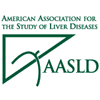 People with liver cirrhosis may benefit from daily therapy with a blood thinner to prevent portal vein thrombosis (PVT), a potentially serious and life-threatening complication, according to an important study presented by Italian researchers at the 62nd annual meeting of the American Association for the Study of Liver Diseases (AASLD) in San Francisco. Using the injectable agent enoxaparin—sold as Lovenox in the United States—for 12 months not only reduced the risk of PVT by nearly 80 percent, but also reduced the risk of decompensated liver disease.
People with liver cirrhosis may benefit from daily therapy with a blood thinner to prevent portal vein thrombosis (PVT), a potentially serious and life-threatening complication, according to an important study presented by Italian researchers at the 62nd annual meeting of the American Association for the Study of Liver Diseases (AASLD) in San Francisco. Using the injectable agent enoxaparin—sold as Lovenox in the United States—for 12 months not only reduced the risk of PVT by nearly 80 percent, but also reduced the risk of decompensated liver disease.
The portal vein is a very large vessel in the abdomen responsible for carrying blood from the gastrointestinal tract and spleen to the liver. People with serious liver disease, such as hepatitis B- or hepatitis C-associated cirrhosis, are prone to developing PVTs—blood clots in their portal veins. When the vein is blocked, it can cause a buildup of pressure, or portal hypertension, which can lead to life-threatening disease.
According to Erica Villa, MD, of the University of Modena and Reggio Emilia in Modena, Italy, and her colleagues, PVT is a frequent complication of advanced cirrhosis, occurring in about 8 percent to 25 percent of patients. Though blood thinners to prevent PVT have shown to be beneficial in retrospective analyses—studies that look back on patients’ experiences with the drugs—data from prospective evaluations, notably clinical trials designed to specifically look at the safety and efficacy of anticoagulant therapy, have been scarce.
Enoxaparin, approved by the U.S. Food and Drug Administration for the prevention of deep vein thrombosis (DVT)—blood clots in the leg that can lead to pulmonary artery blockage—was therefore put to the test by Villa’s team in a study of 70 people with advanced liver cirrhosis. Patients were randomly allotted to receive either 4,000 international units (IU) enoxaparin or placebo for 12 months and were then followed, off treatment, for another 12 months.
The study’s primary goal was to see if enoxaparin reduced the incidence of PVT. Villa’s group also wanted to find out if treatment slowed or prevented decompensation—a sign of liver failure—and improved survival. As for safety measurements, the researchers also set out to determine if enoxaparin treatment was associated with excessive bleeding, a serious risk of anticoagulant therapy.
According to Villa’s report, six of the 36 patients (16.7 percent) who received placebo, compared with no patients who received enoxaparin, developed either a complete or partial portal vein blockage while on treatment during the first 12 months of the study. This difference between the two groups was statistically significant, meaning it was too great to have occurred by chance.
During the 12-month follow-up period, six additional blood clots occurred: three among those in the placebo group and three among those who originally received enoxaparin. These blood clots typically occurred within two to six months after enoxaparin was discontinued.
Liver decompensation was significantly more likely to occur among those who received placebo in the study. Nineteen (52.7 percent) in the placebo group, compared with four (11.7 percent) in the enoxaparin group, had signs of liver failure during treatment. Even after treatment was stopped, rates of decompensation remained higher among those who received placebo, compared with those who received enoxaparin.
Villa noted that survival was also better among those who received enoxaparin compared with those who received placebo.
In addition, Villa said, enoxaparin treatment was well tolerated. There were no reports of excessive bleeding among any patients in the study.
“In this prospective randomized controlled study in advanced stage cirrhotics,” Villa’s group concluded, “enoxaparin was shown to be safe and effective in preventing PVT but, most importantly, was associated with greatly reduced occurrence of decompensation both during the active period of treatment and in the follow-up period.”
Advertisement
Advertisement
Advertisement






Comments
Comments